The Split Rock Conservation Area is a 241-Acre preserve off SW 20th Ave. in Gainesville featuring a 1.8-mile loop trail. The Preserve is a calcareous hammock with limestone outcrops and sinkholes surrounded by oak and hickory trees and including portions of Hogtown Prairie, a vast wetland marsh seasonally flooded by Hogtown Creek.
The Conservation Area was purchased by the City of Gainesville and is one of many nature parks in Alachua County. Funding for the acquisition of the park was provided by the Florida Communities Trust using Florida Forever funds.
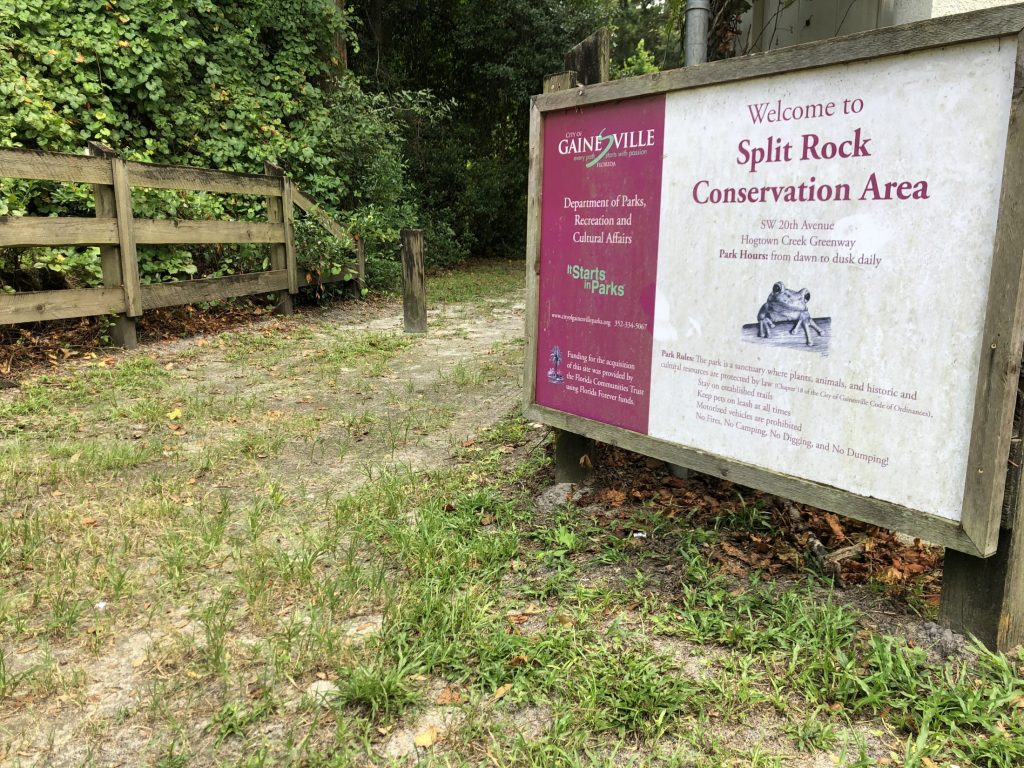
Split Rock trailhead
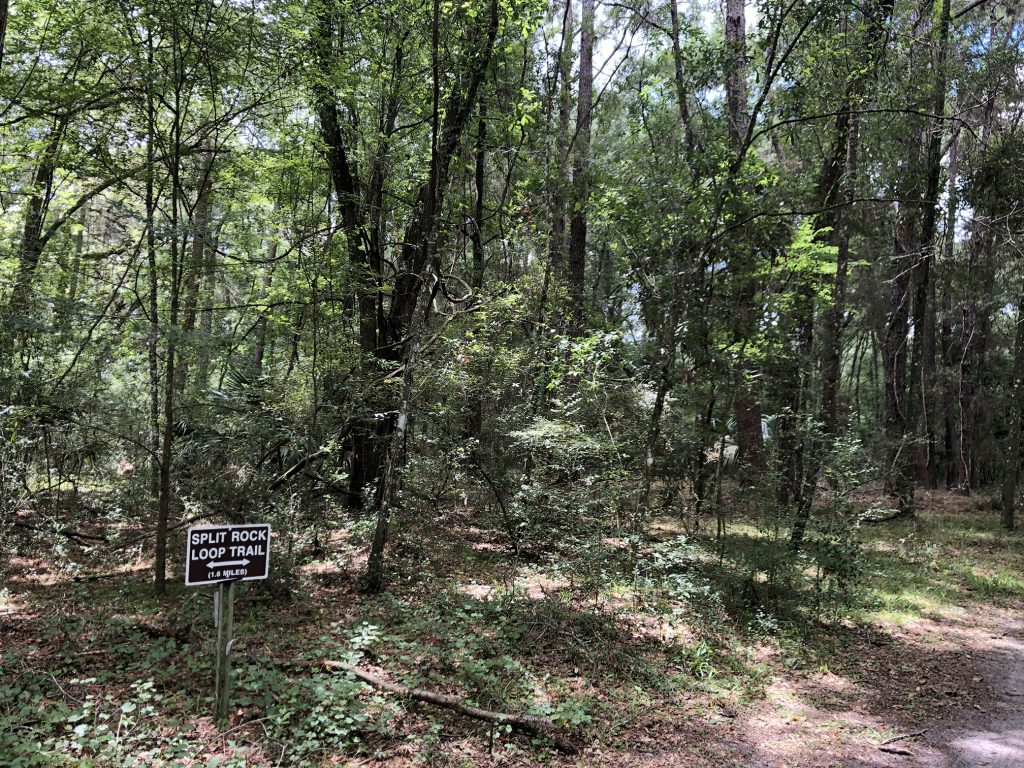
Split Rock Loop Trail
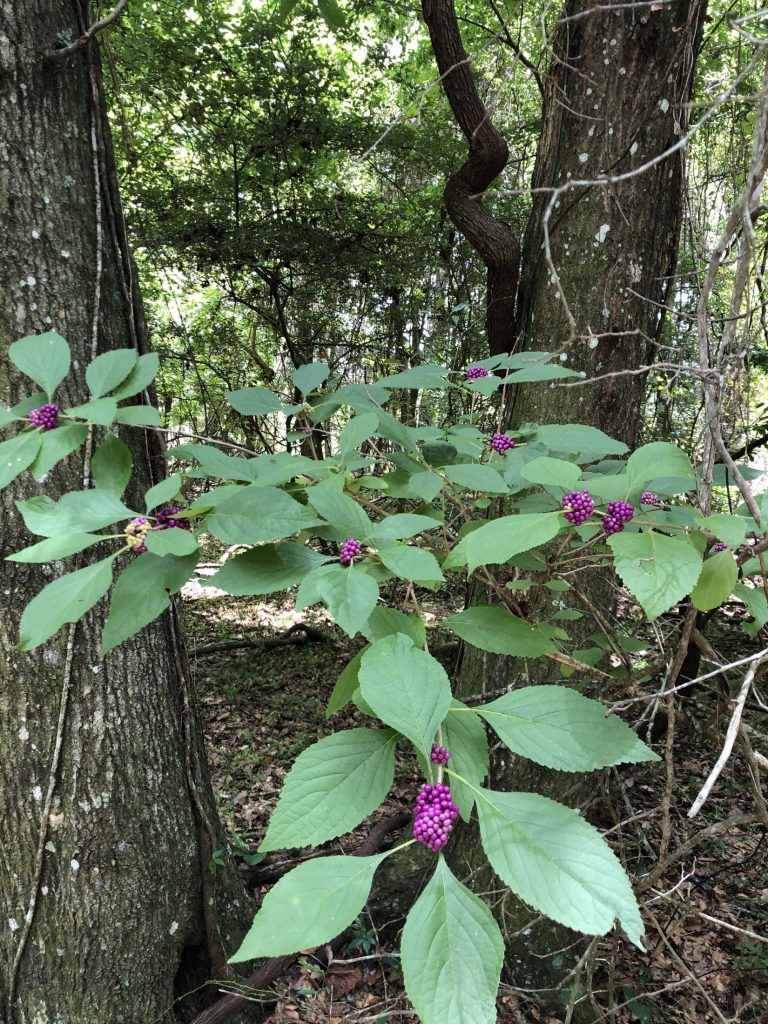
Callicarpa americana – American Beautyberry growing along trail in Split Rock Conservation Area.
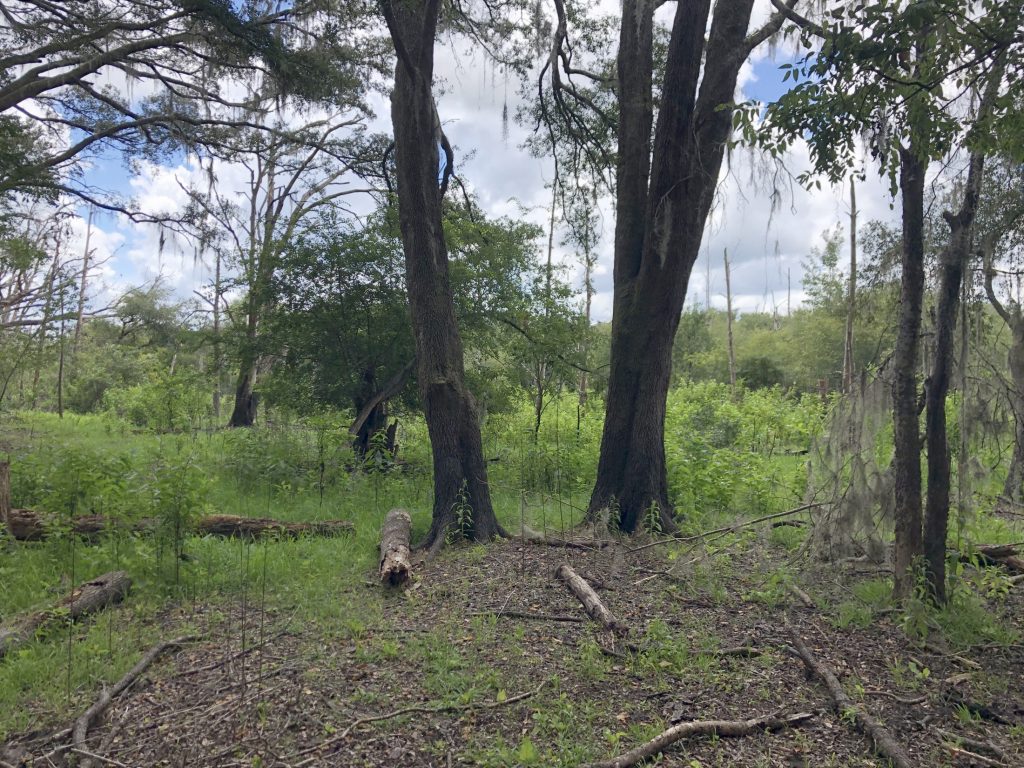
Part of higher elevation Hogtown Creek overflow in Split Rock Conservation Area.
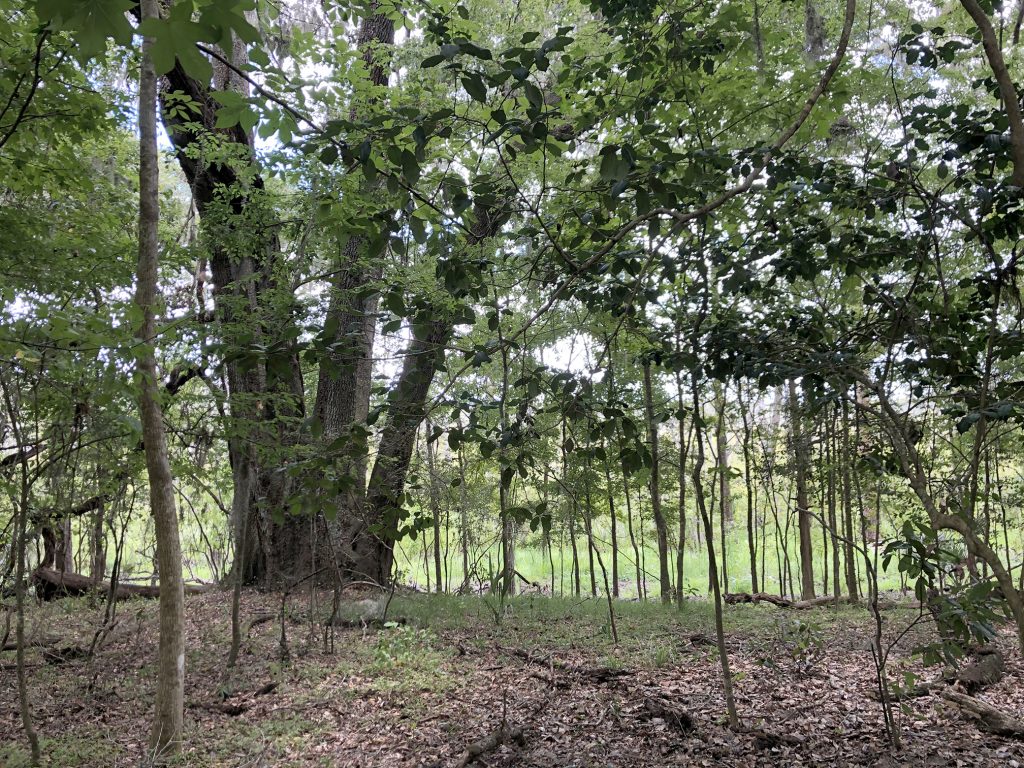
First view (looking southeast) from trail of Hogtown Creek overflow area.
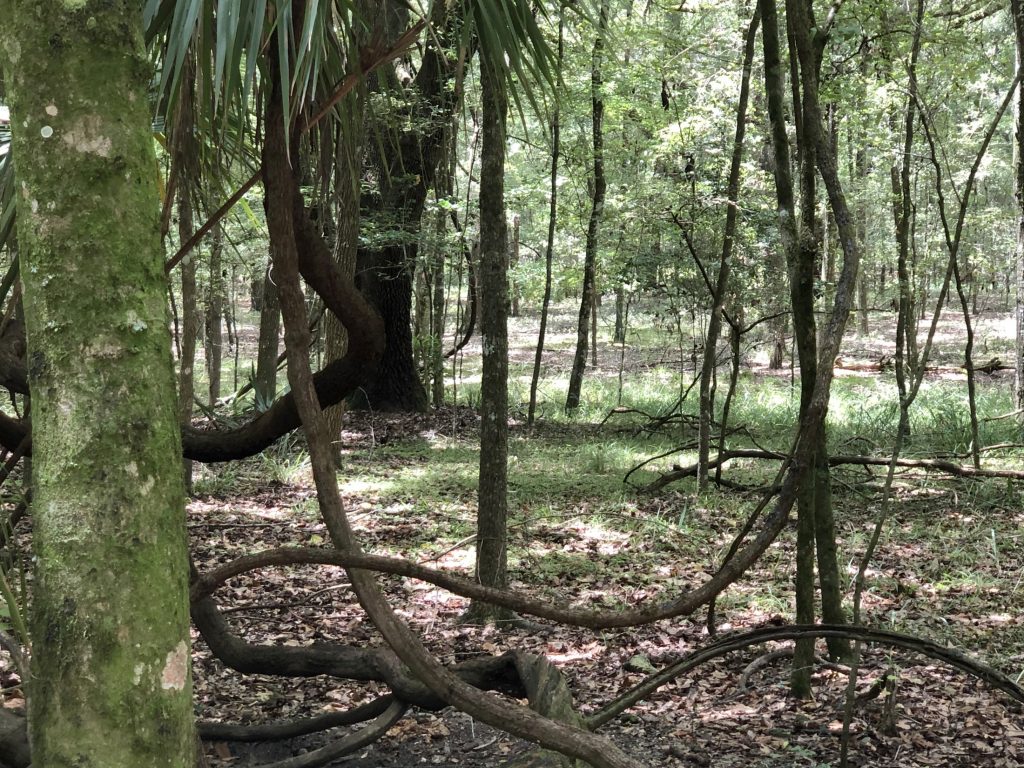
Large grape vines within a wooded area of Split Rock Conservation Area.
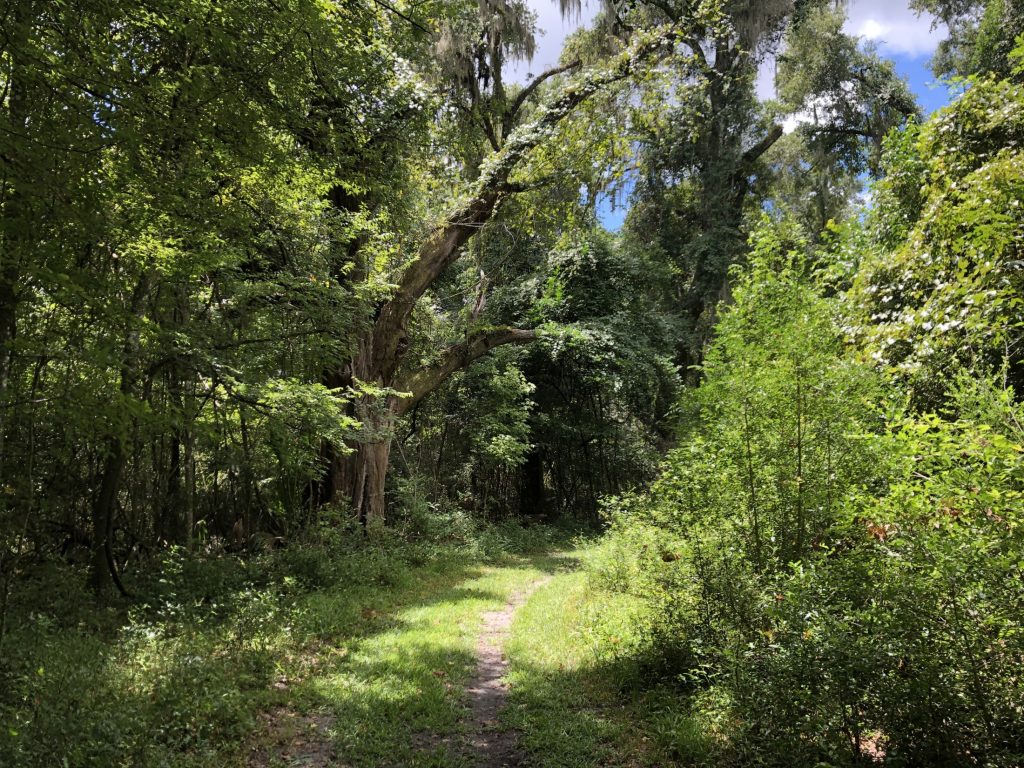
Split Rock Loop Trail view as you are walking south.
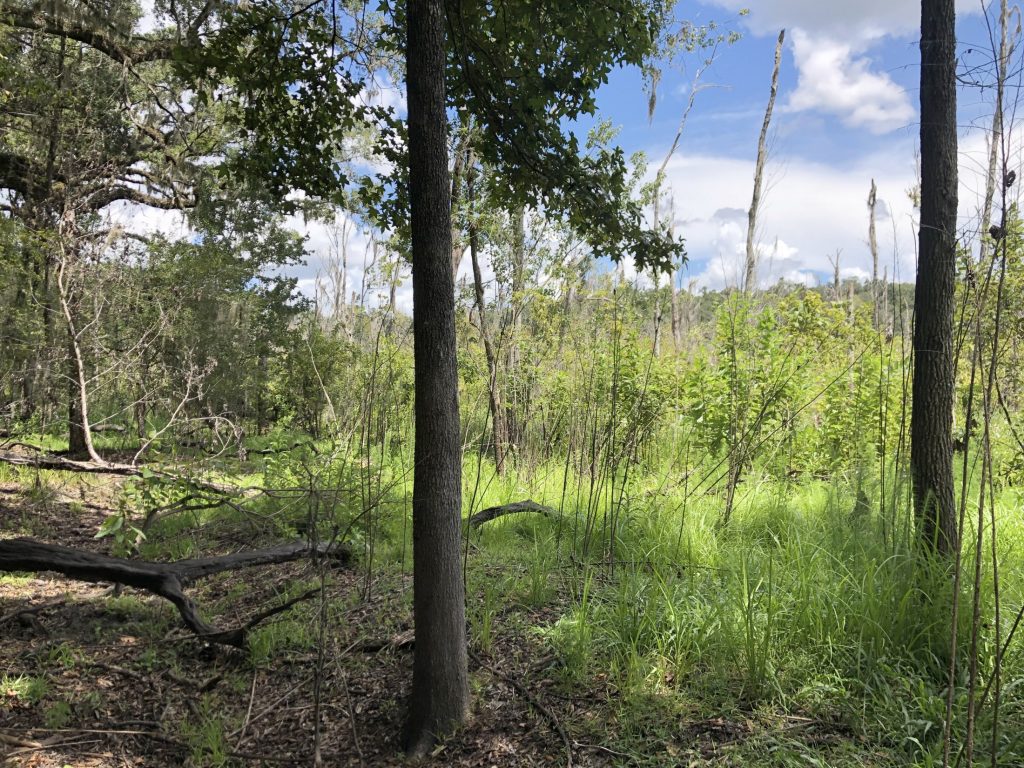
Another of view of Hogtown Creek retention area.
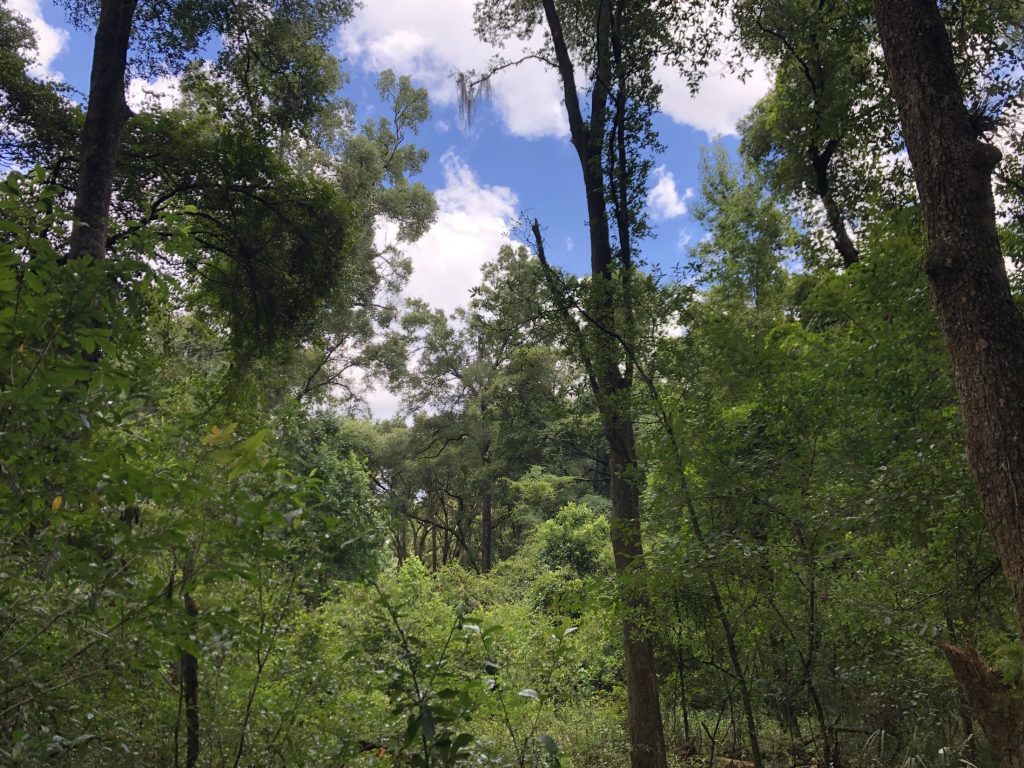
A wooded area within Split Rock Conservation area.
Bob Belmont, a research associate at the McGuire Center, is conducting a biodiversity inventory of the Lepidoptera of this area. Special use authorization was obtained from the City of Gainesville to collect moths in the preserve and deposit specimens in the McGuire Center collections. Various collecting methods are used including flight and pheromone traps and lighted sheets. The specimens are prepared, labeled with the date and location, identified, and sorted into drawers in the collection. Each specimen is given a unique identifier number, photographed, and catalogued into the McGuire Center databases.
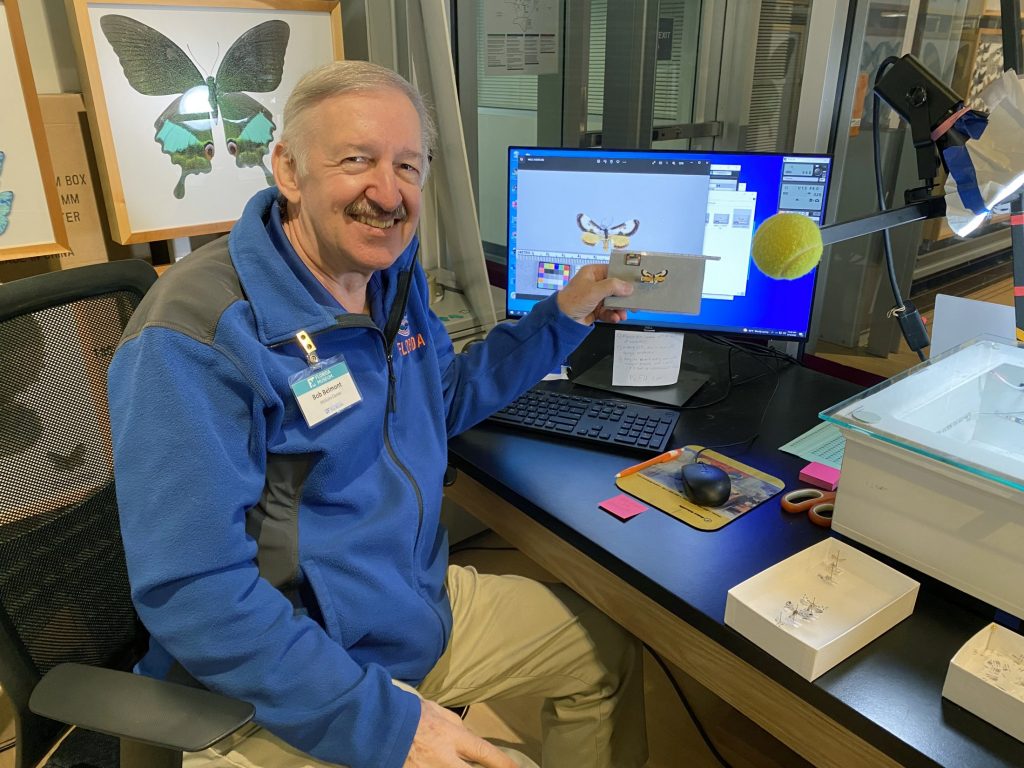
Bob Belmont is working on digitizing specimens from his Split Rock Survey. Here he is holding a specimen of Eudryas grata, the Beautiful Wood-nymph, after capturing its image at one of the McGuire Center’s digitization stations.
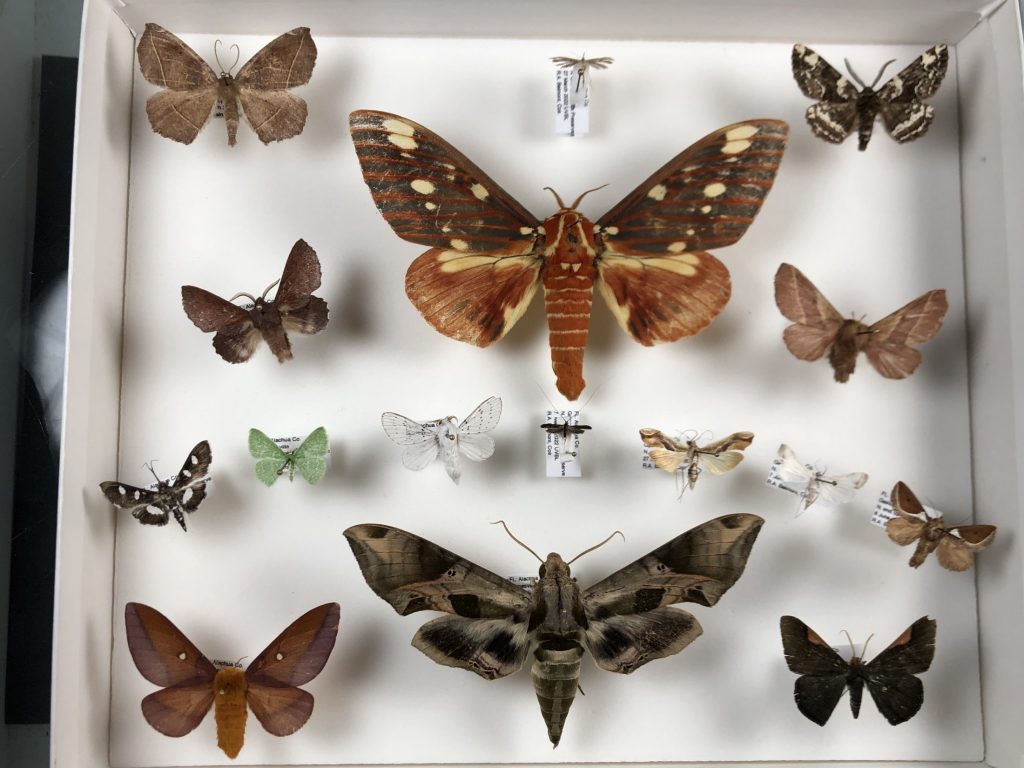
An assortment of moths from Spit Rock Conservation Area.
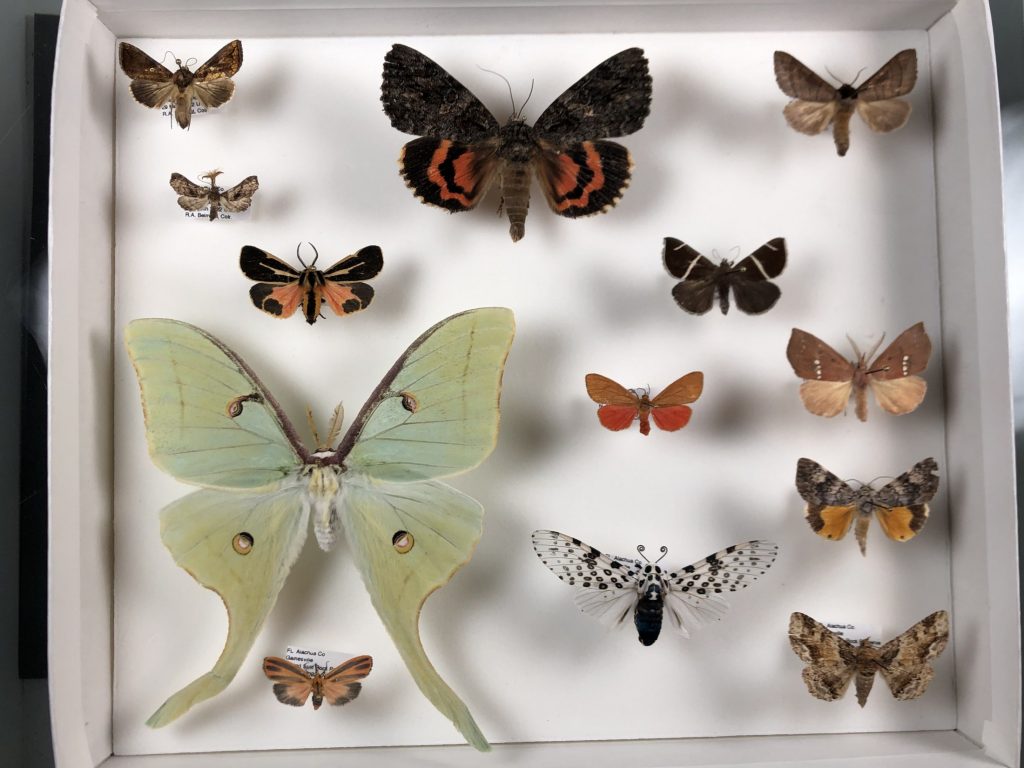
An assortment of moths from Split Rock Conservation area.
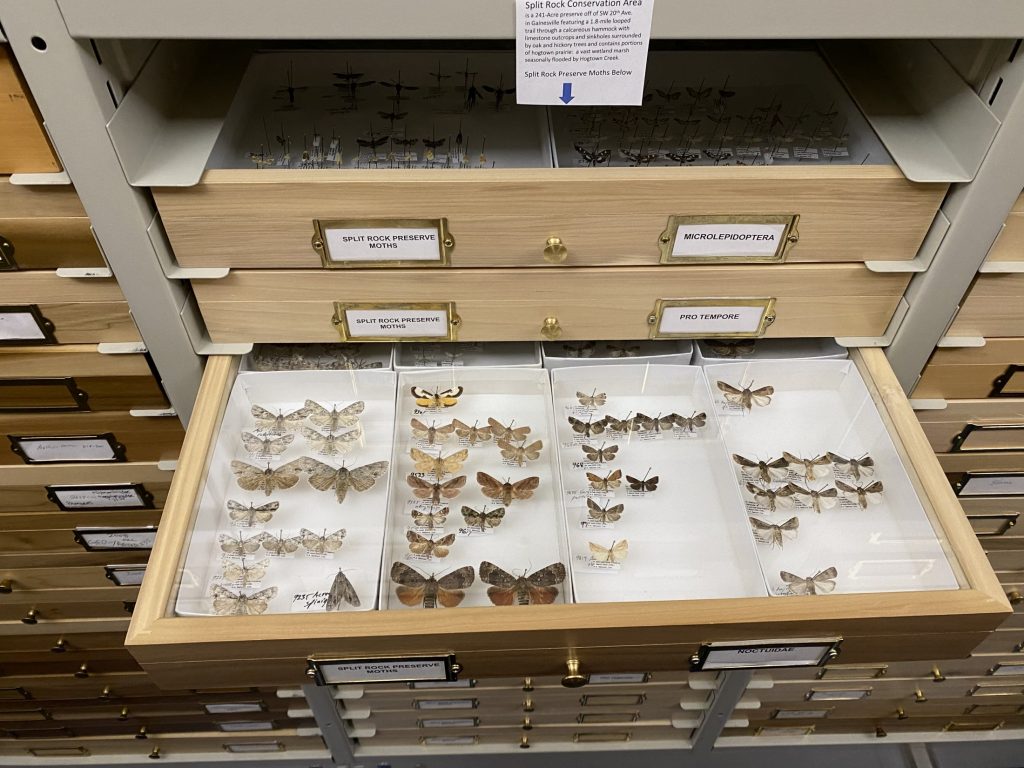
Survey specimens are sorted by species and stored in glass-topped drawers at the McGuire Center.

Specimens are pinned with the wings spread on special boards to dry before being labeled and placed in glass topped drawers.
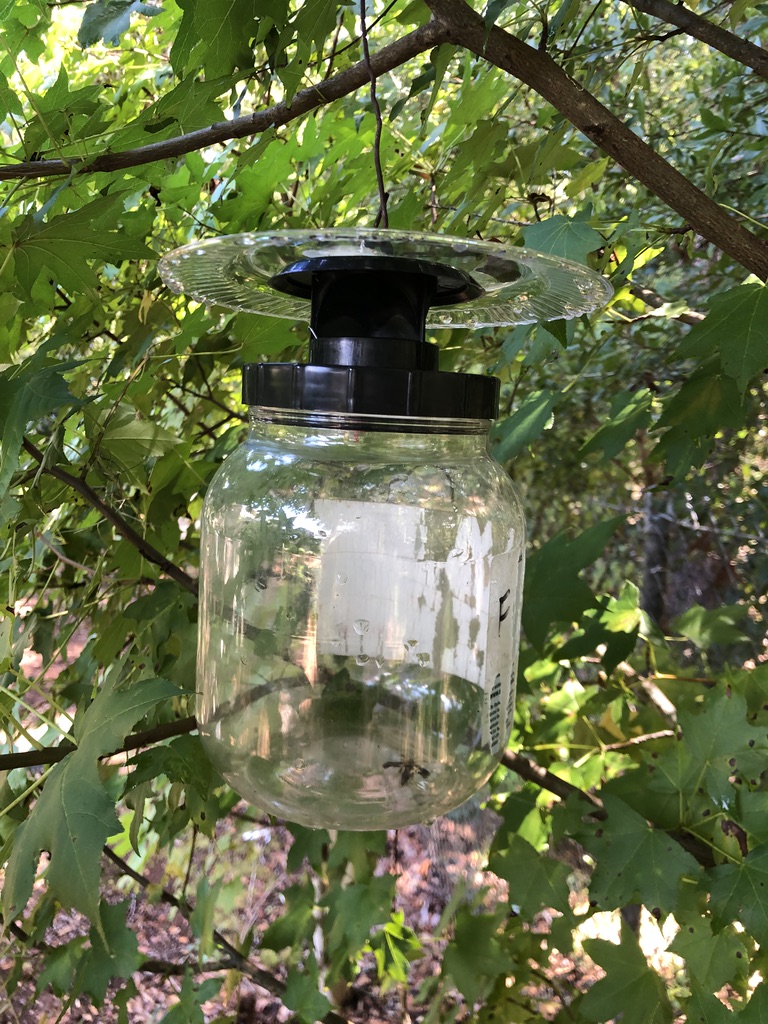
A pheromone trap used to collect moths of the family Sesiidae.
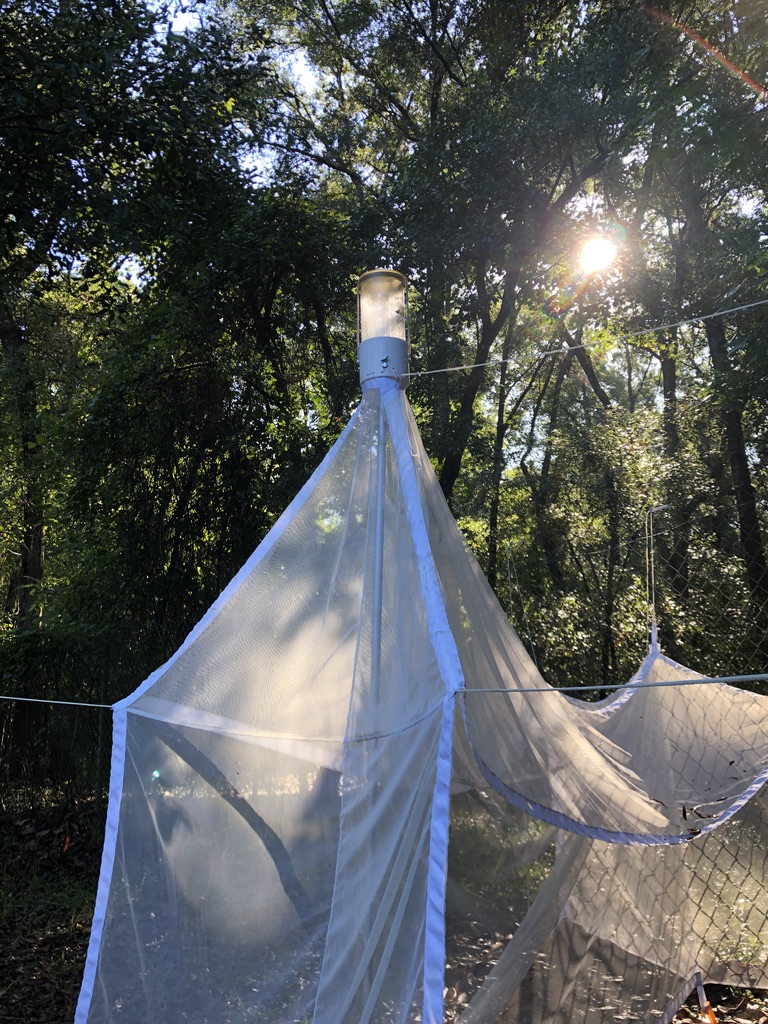
A malaise or flight trap used to intercept flying insects which instinctively crawl upward on the screen where they are funneled into a container at the top of the trap.
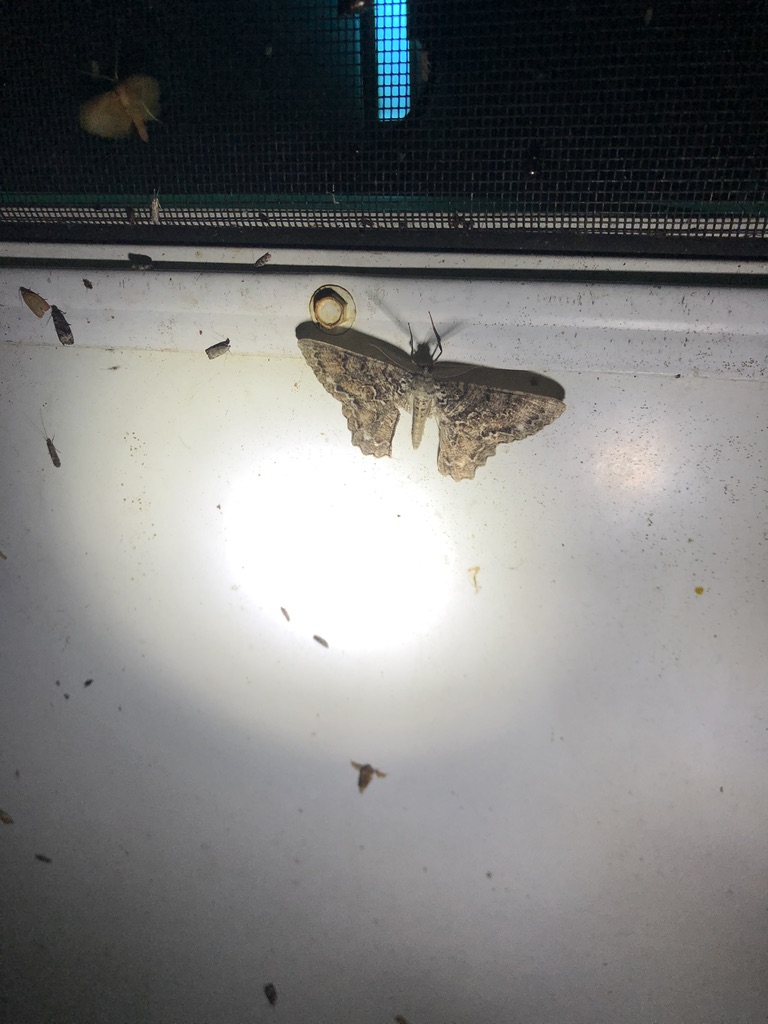
Epimecis hortaria – the Tulip-tree Beauty, at light.
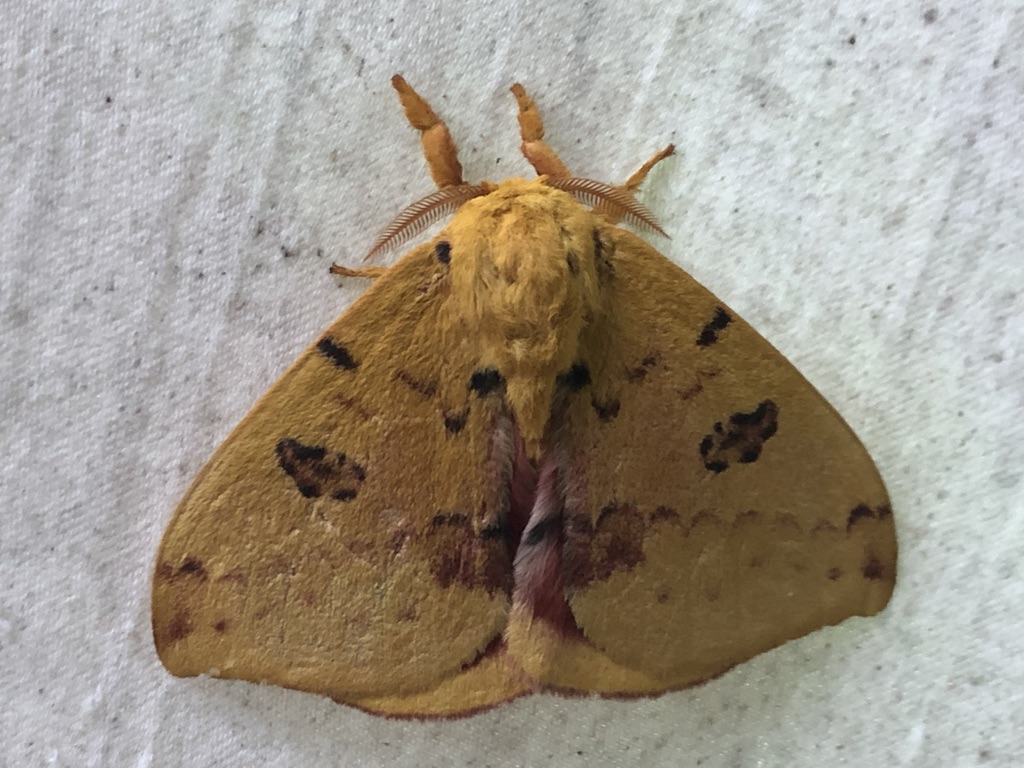
Automeris io – Io Moth, Family Saturniidae.
A preliminary list of moths found in the conservation area is available.
A gallery of some individual specimens is shown below.
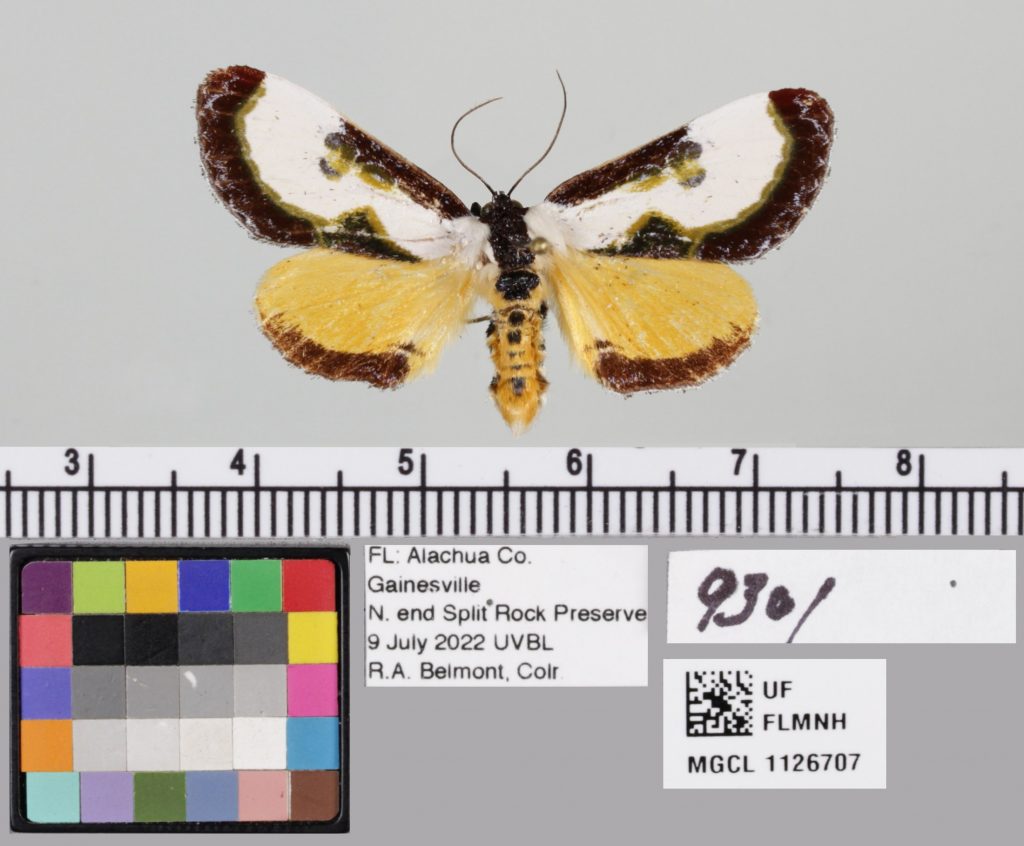
Eudryas grata – Beautiful Wood-nymph, Family Noctuidae.
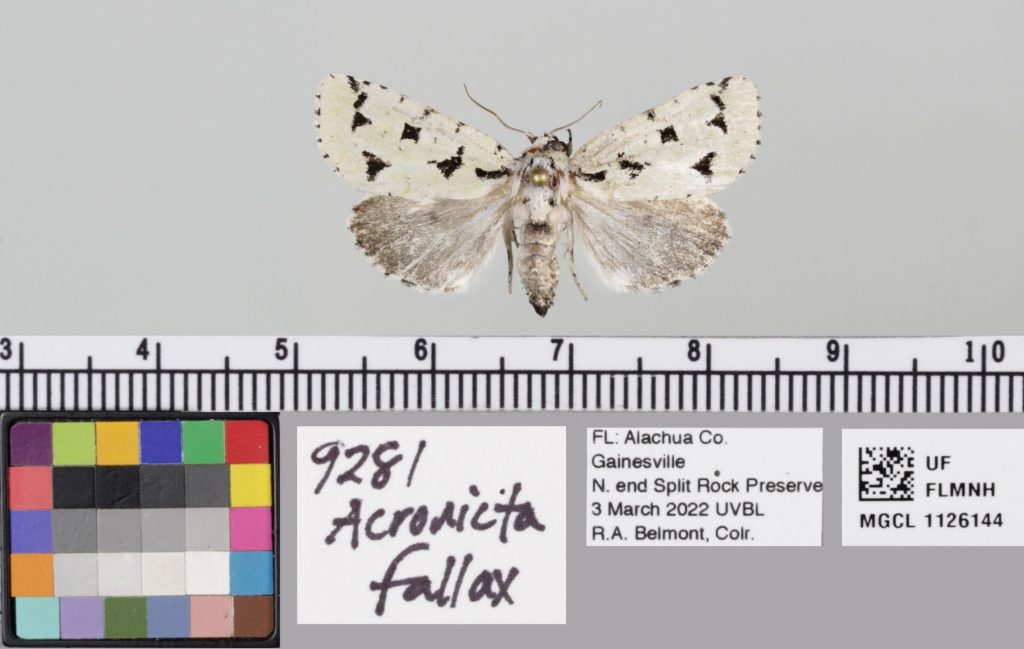
Acronicta fallax – Green Marvel, Family Noctuidae.
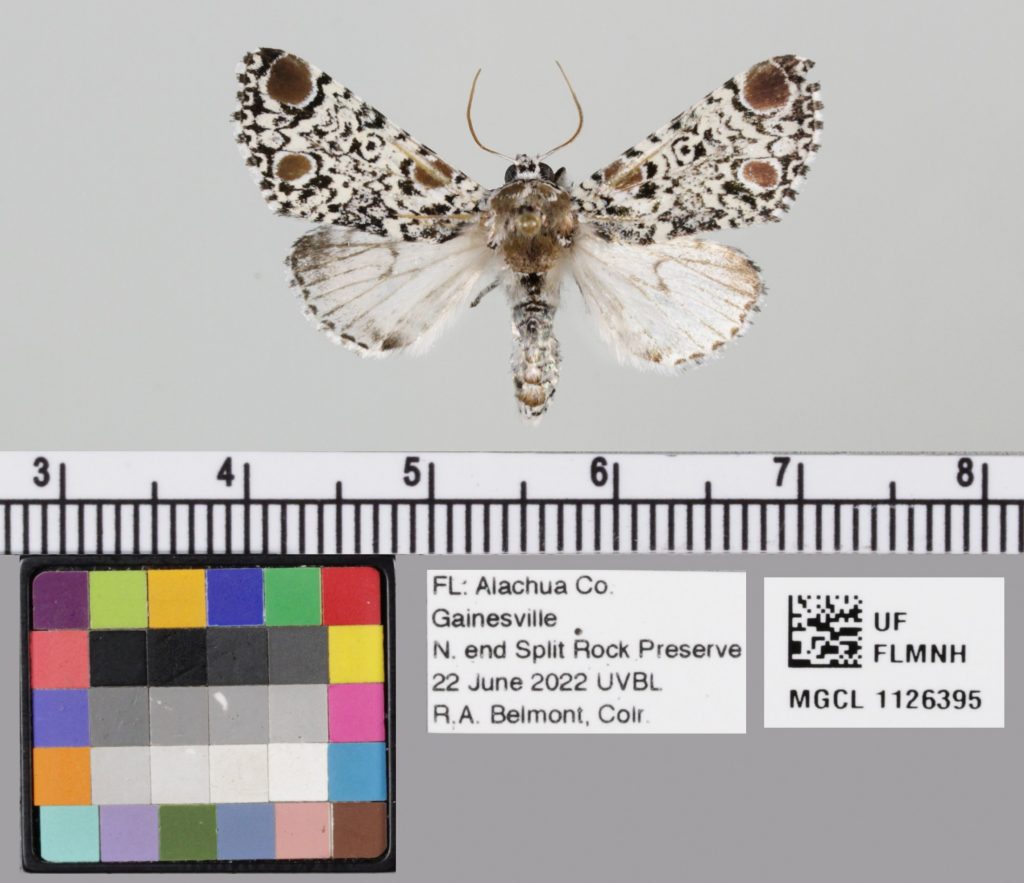
Harrisimemna trisignata – Harris’s Three-spot, Family Noctuidae.
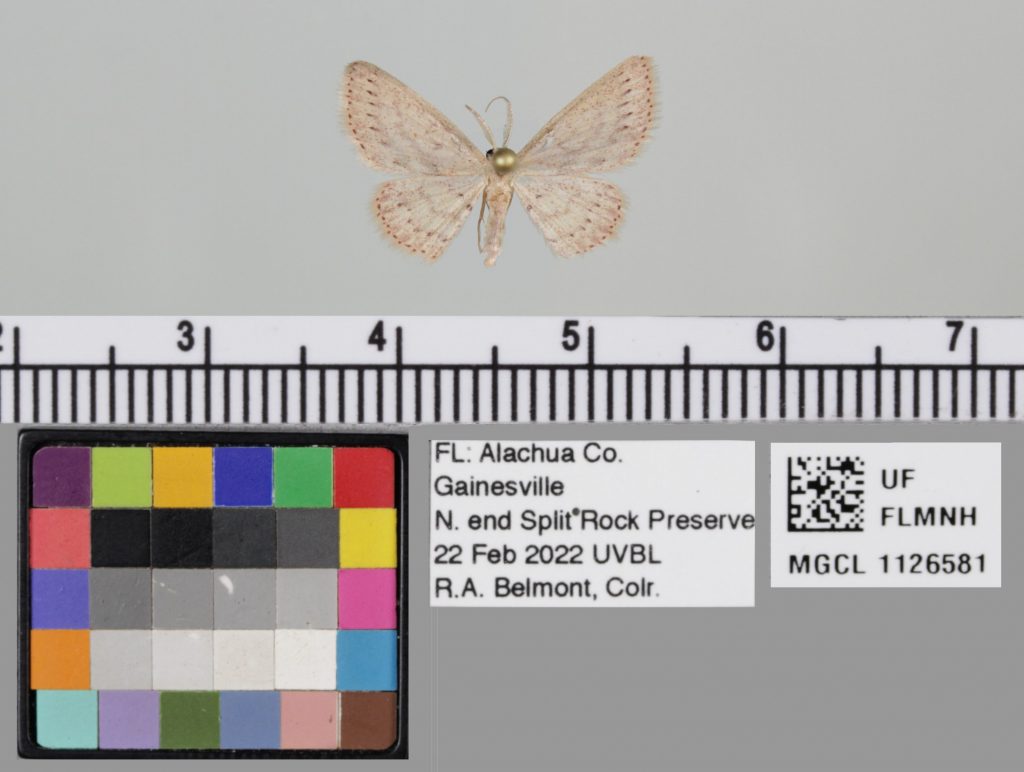
An unidentified species of Geometridae, subfamily Sterrhinae.
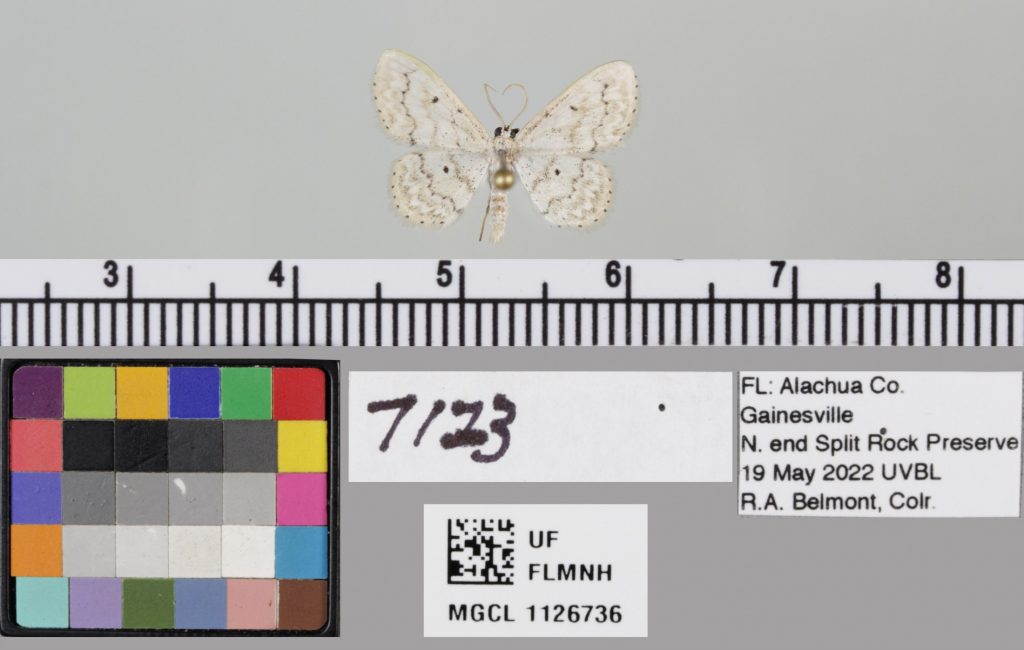
Idaea obfusaria – Rippled Wave, Family Geometridae.
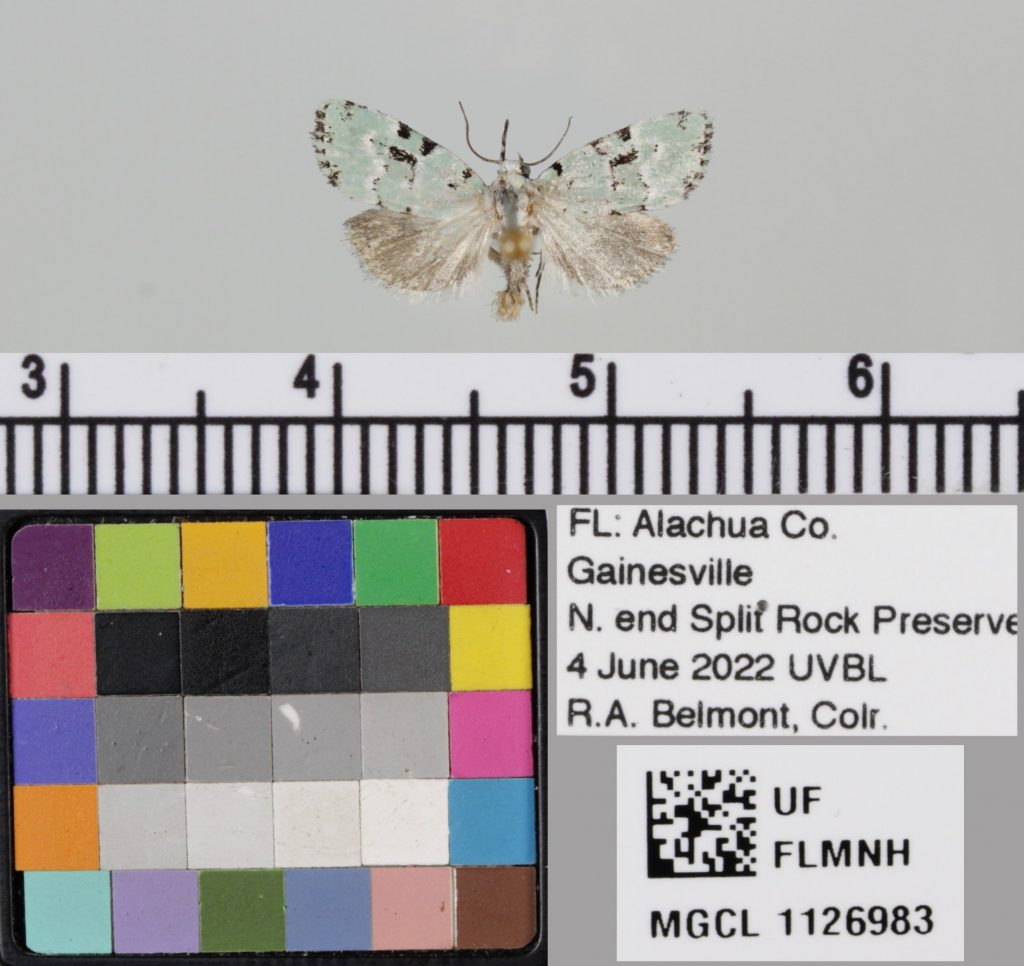
“Elaphria” cyanympha, Family Noctuidae.























